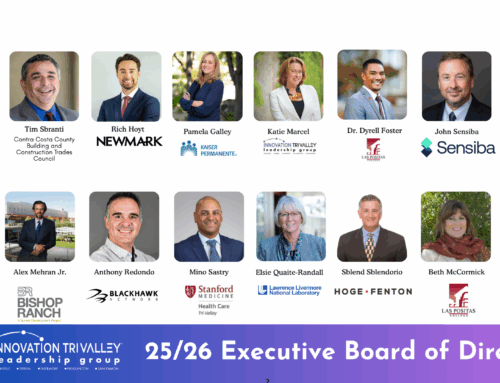PLEASANTON, CALIF. (Pleasanton Weekly/Tim Hunt) SEPTEMBER 26, 2019
Speakers at the Innovation Tri-Valley Leadership Group’s Regional Summit Monday spared few punches in sharing their opinions.
Yes, the economy in the Bay Area and the Tri-Valley is doing great ($42 billion GDP here), but there are significant challenges (soaring housing prices and miserable commutes). What’s more there’s the great divide in California between flourishing regions and those that are suffering.
Keynote speaker Lenny Mendonca, the governor’s chief economic and business adviser, put California in perspective when he described it as a series of regions that collectively produce the 5th largest economy in the world. He views the state through the prism of regions and is troubled by the differences between the flourishing Bay Area and other coastal regions in contrast to the Inland Empire in Southern California and the greater San Joaquin Valley. He’s spent an average of one day a week in one of those troubled regions since taking the position.
He pointed out that the Central Valley is the breadbasket for the United States and beyond with its robust exports of agricultural products. One cutting edge area that he cited as a possibility is the development of precision farming with technology that would determine when to water, how much fertilizer to apply and do it by sectors of the field. Companies such as TopCon in Livermore already have the technology for precision grading to start the management process.
When it comes to the Inland Empire, it has 10 percent of the total warehouses in the United States. That’s driven by the container imports coming through the ports of Long Beach and Los Angeles that are broken down and repackaged for shipment elsewhere. Mendonca thought, given the huge shifts in retail with e-commerce, there’s an opportunity for the Inland Empire to become an innovation hub in that sector.
What he and two of the panelists, Bay Area Council CEO Jim Wunderman and Lisa Vorderbrueggen from the Building Industry Association, agreed upon was the need to accelerate new housing development. Mendonca described the few pieces of legislation that got through Sacramento as a “down payment.” Vorderbrueggen, a reporter for more than 20 years before moving to the builder’s group, was justifiably more cynical and asking just what’s been done with widespread agreement that it’s a crisis.
Lisa, with her blended family, has 14 grandchildren who all are living in Contra Costa County. She expressed her concern that they would be unable to afford to live there once they grow up.
Mendonca added the perspective of a new grandfather. He pointed out that a couple of generations ago 90 percent of people thought their children would have a better life than they did. He described it as a coin flip today and said that needed to change.
The three agreed that speeding up the approval process so it wasn’t a gamble whether a homebuilder would receive entitlements on land that is zoned for housing.
That creates the rub with local officials who, unlike isolated regional board members, face voters from the neighborhoods. Livermore Mayor John Marchand pointed out how the state can muck things up, citing mandatory long-term water rationing that was imposed regardless of whether it was necessary in a local jurisdiction. That makes for difficult conversations when more housing is proposed and someone asks where’s the water going to come from.
Long-term water supply, given the vagaries of the rain and snowfall year to year, is a problem that’s not being addressed statewide. Voters passed a bond measure with $2.7 billion for water storage in 2014 and there’s no project underway despite widespread agreement that the off-stream Sites Reservoir would help environmentally and economically. The long-awaited fix to the Delta has been modified to a single tunnel by the governor and the Dept. of Water Resources now is grinding through a restarted process.
Wunderman also pushed accessory dwelling units, a logical approach, given how many Bay Area dwellings are single-family homes, many on large lots in the suburbs. That’s an opportunity. He also cited the CASA accord released earlier this year. It was developed by the major cities, regional organizations and builders without input from suburban areas and was panned by suburban elected officials.
That group is exploring how to raise $2 billion annually for subsidized housing—Wunderman argues that housing should be subsidized and seen as a reasonable expense just like police, fire, libraries and parks. What’s frightening about the proposal is it would be administered through the Metropolitan Transportation Commission, an agency known for its mismanagement and disfunction.
The governing board consists of elected officials (county and local) who are immune to voter attention in that role. It’s tempting to demand a directly elected board, but then look at the incompetence of the BART board. Sadly, it’s no panacea.







